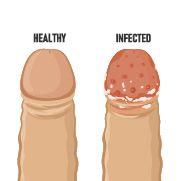How Long To Pass A Kidney Stone- A Timeline Guide
In This Article
How Long To Pass A Kidney Stone- A Timeline Guide
Jaymala
Updated on January 13, 2024
Medically verified by Dr. Arya
Fact checked by Dr. Pournami

Urology
6 min read
Dealing with kidney stones can be physically and emotionally challenging. There could be pain involved and several other concerning symptoms.
You may get relief from medication, certain home remedies, or may have to go for a surgery to get rid of the stones. But what remains the most important question is how long will it take to pass a kidney stone? And you’re not the not only one asking this.
To help you understand the entire procedure - right from identifying the symptoms to finally passing a kidney stone, Mykare Health is here with a complete guide.
Read on to get through the journey of passing kidney stones without much panic.
Identifying the Symptoms
Symptoms of a kidney stone may vary from intense back or side pain to urinary discomfort.
Understanding the timeline of events from the onset of symptoms to the eventual passing of the stone is necessary for managing expectations and seeking appropriate medical care.
This timeline guide aims to provide you a general overview of the different stages involved in the process. Always remember, the experience may vary from one person to another.
Onset Of Symptoms
The initial symptom may vary from intense pain in the back or side and then the pain can radiate to the lower abdomen. Other signs include frequent urination, and blood in urine. The time frame of the onset of signs may vary from one individual to another.
Now that you know the symptoms, let's understand further.
Medical Evaluation
Why should you go for a medical examination?
Time frame: 1 or 2 days
-
A physical examination may be conducted to assess signs of discomfort, swelling in the abdomen or back.
-
Imaging tests, such as CT scans or ultrasounds, are commonly used to visualise the presence, size, and location of the kidney stone. These tests help determine the appropriate course of action.
-
Examination of your urine samples may be done to detect the presence of blood, or other substances indicative of kidney stones.
Diagnostic Tests to Assess Stone Movement
Time frame: days to weeks
The timeline of the stone movement depends on the size and location of the stone.
How’s the diagnosis done?
-
Healthcare providers may closely monitor your symptoms, including the intensity and location of pain, to assess the progress of stone movement.
-
You may be instructed to increase fluid intake to facilitate the natural flushing of the stone.
-
Pain management strategies, such as medication, may be prescribed.
-
Periodic imaging, such as repeat ultrasounds or CT scans, may be conducted to track the stone's position and movement. You may be advised to make lifestyle changes, including dietary adjustments and activity modifications to support the flushing of the stone.
Pain management
The pain can be managed by following proper steps.
Time frame: throughout the process
-
Nonsteroidal anti-inflammatory drugs (NSAIDs) such as ibuprofen or acetaminophen may be prescribed to help reduce the pain.
-
Applying heat to the affected area, such as a heating pad, can provide you relief by relaxing your muscles.
-
Adjusting activity levels and avoiding strenuous physical exertion can help minimize pain and discomfort during the stone's passage.
Hydration and diet
Time frame: Throughout the process
-
Hydration is necessary to help the flushing of the kidney stone.
-
Citrus fruits and their juices, such as lemon or orange, can be beneficial.
-
Lowering sodium (salt) intake is recommended to prevent excess calcium from being excreted in the urine, which can contribute to stone formation.
Medical Assistance
Medical intervention is needed to know appropriate details and location of the stone.
Time frame: time varies depending on the symptom
-
At the onset of symptoms, you should seek prompt medical attention. This may involve scheduling an appointment with a primary care physician or seeking urgent care or emergency services if symptoms are severe.
-
Healthcare professionals use various diagnostic tools, including imaging studies like CT scans or ultrasounds, to confirm the presence, size, and location of the kidney stones.
Monitoring and Follow up
Time frame: weeks
-
Monitoring is required to know the progression of the stone.
-
You will be asked to report any changes in symptoms, including the intensity and location of pain, blood in the urine, or other related discomfort.
-
CT scan can be done to assess the location of the stone.
 6 min read
6 min readWhat is Stapler Circumcision - Everything You Need to Know
 8 min read
8 min readIs Circumcision Good or Bad - Here's How to Find Out
 8 min read
8 min readCircumcision - Scientific Guide to All Your Questions
Book Your Consultation Now
Stone Passage
Once you are following proper steps in the treatment, there is no need to worry. Just keep a track on the stone passage as it may be expelled from the body during urination. This can cause little discomfort.
Time frame: days to weeks
As the stone travels down the ureter, it eventually reaches the bladder. This transition is often less symptomatic than the movement through the narrower ureter.
Once the stone has passed into the bladder and is expelled through urination, the acute phase of the kidney stone episode is considered complete.
Recovery
After the flushing of the stone from your body, it is necessary to follow regular check ups and maintain a healthy lifestyle.
Time frame: weeks
Relief from the intense pain associated with the kidney stone episode is a significant aspect of recovery.
Long-term preventive measures, including lifestyle changes and medication if prescribed, are often discussed and reinforced during the recovery phase.
You will be advised to remain vigilant for any signs of recurrent symptoms and seek prompt medical attention if you suspect the formation of a new kidney stone.
Preventive Measures
You can avoid kidney stones formation by following these steps:
-
Drink at least 8 glasses of water daily.
-
Dietary Modifications: Maintain a healthy lifestyle by eating healthy food such as green vegetables, pulses, fruits and juices.
-
Reduce dietary sodium (salt) intake.
-
Consume an adequate amount of dietary calcium from food sources rather than supplements.
-
Avoid excessive intake of animal proteins, as it may contribute to stone formation.
-
Limit the consumption of high-oxalate foods, such as beets, nuts, and chocolate.
-
Include citrous fruits or fresh juices in your diet.
-
Maintain a healthy weight.
-
Regular physical activity is needed.
-
Attend to regular follow up appointments with healthcare professionals for ongoing monitoring and adjustments to preventive measures.
-
Now that you have a fair enough idea of how much time is required to complete the entire process of identifying kidney stones and passing them out, make sure to take proper action without much delay.
Seek Medical Attention: always refer to a good healthcare provider if symptoms persist.
Treatment plans, including pain management, dietary recommendations, and interventions, should be tailored to individual needs.
Consistently maintaining proper fluid intake supports the natural flushing of minerals and reduces the risk of stone formation.
If prescribed, adhere to medications as directed by healthcare professionals.
Be vigilant for early signs of kidney stone recurrence, such as back or abdominal pain, blood in urine, or changes in urinary habits.
Dealing with kidney stones can be emotionally challenging. Seek psychological support if needed.



